5 Best Brachioradialis Curl Exercises (with Pictures!)
Chances are, you’re already performing one or two exercises that involve the brachioradialis muscle - an often forgotten portion of the arm that is responsible for quite a bit of forearm strength and elbow movement.
Due to its position and natural biomechanical functions, the brachioradialis is primarily trained through curl-type exercises, and as such lifters wishing to create more training stimulus for this particular forearm muscle will often incorporate a curl variation that targets said muscle.
A few common examples of curl-type brachioradialis exercises are the ever popular hammer curl and Zottman curl - though more obscure exercises like parallel bar curls or rope hammer curls also fulfill the same role, albeit with greater specificity.
What is the Brachioradialis Muscle?
From an anatomical viewpoint, the brachioradialis is approximately half of the soft tissue of the forearm, with attachment points at the elbow and wrist. It runs along the outer portion (posterior) of the forearm, and will often be recruited alongside other muscles along the arms like the biceps brachii or brachialis muscles as well.
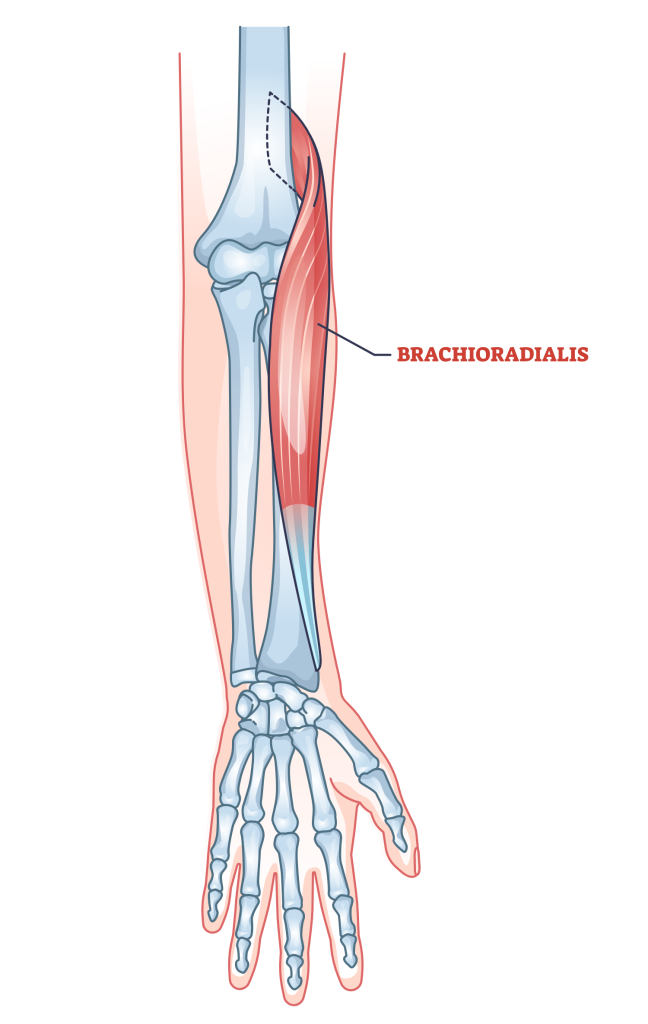
Due to its large mass and long span, it is the greatest contributor to forearm mass, and as such is essential for any bodybuilder or aesthetics lifter wishing to improve the appearance of their arms - though that is not to say that the brachioradialis is not essential for many athletic activities as well.
What Purpose Does the Brachioradialis Serve?
Apart from stabilizing any movement involving forearm contraction, the brachioradialis is also considered to be a contributor to elbow flexion and any sort of arm movement involving a pronated grip.
What Exercises Use the Brachioradialis Muscle?
The most commonly encountered exercises that are known to target the brachioradialis in a dynamic manner are the hammer curl, neutral-grip pull-up and cable machine row.
How to Pick the Right Curl for Brachioradialis Growth
Picking the right exercise to work your brachioradialis requires more than just the exercise targeting the right muscle - it should also fit properly into your training program, as well as conform to any needs or caveats that you may have.
While the standard dumbbell hammer curl is versatile enough to fit into most modern weightlifting programs, lifters with more specific needs or without access to a pair of dumbbells may wish to make use of certain other exercises like reverse EZ bar curls or hammer curls that make use of a machine instead.
Brachioradialis Curl Exercises
1. Dumbbell Hammer Curls
The classic brachioradialis exercise; the dumbbell hammer curl is both convenient and effective as an accessory movement to heavier compound exercises, but may lose out in terms of forearm recruitment in comparison to other brachioradialis exercises.
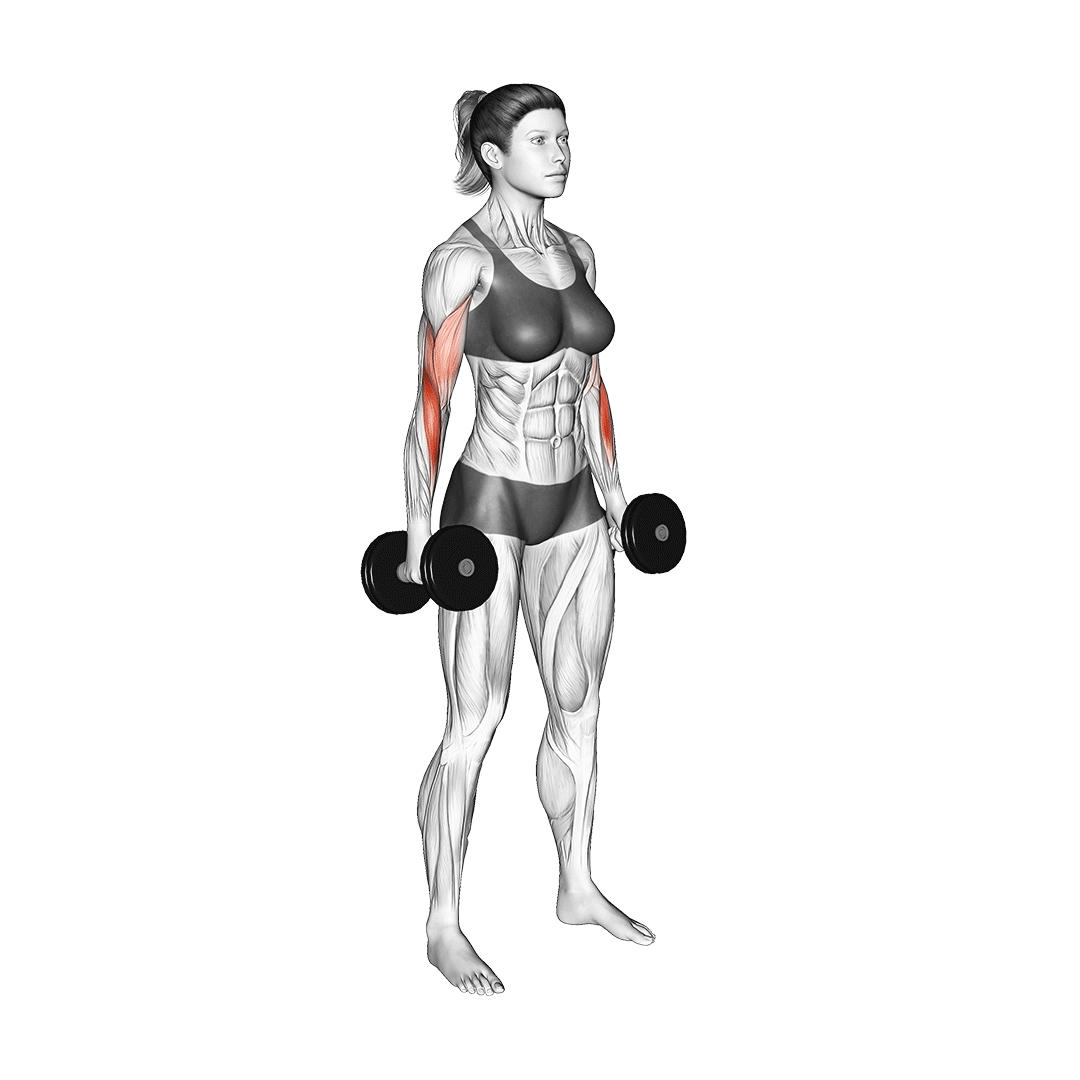
It is a single-joint compound exercise known to target not only the brachioradialis, but also the biceps brachii and the brachialis of the upper arms. While this compound nature means more weight can technically be lifted, much of the resistance is not placed on the brachioradialis and it is instead the brachialis and biceps that are better trained by this movement.
Benefits as a Brachioradialis Exercise
The dumbbell hammer curl is as simple as it gets - a free weight exercise that may be performed with one or both arms at a time, with relatively little weight and as minimal an amount of equipment as possible.
Equipment Needed to Dumbbell Hammer Curl
The dumbbell hammer curl will only require a single - if not two - dumbbells of moderate weight.
How-to:
To perform dumbbell hammer curls, the lifter will stand with a pair of dumbbells in their hands, arms relaxed at their sides.
Then, keeping the elbows and upper arms stationary, they will bend at the elbow and move the weights upwards as the hands remain in a neutral grip.
Once the dumbbells are at shoulder elevation, they will slowly reverse the motion, thereby completing the repetition.
2. Dumbbell Zottman Curls
A highly dynamic compound exercise that works not only the brachioradialis but also the brachialis and the biceps brachii, the dumbbell Zottman curl is a multi-joint compound exercise often used by athletes and bodybuilders to correct arm imbalances or otherwise achieve a multi-angle dynamic arm workout.
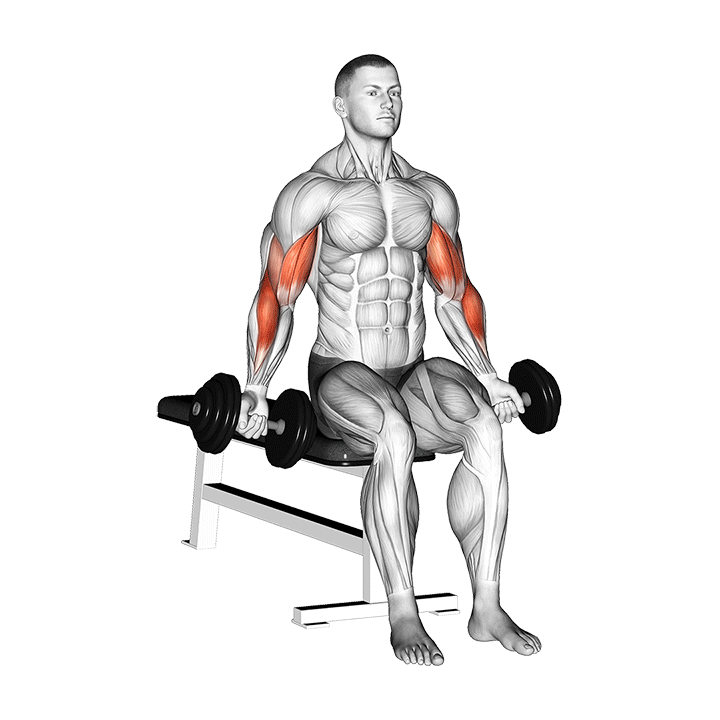
It is considered to be somewhat of a multi-purpose exercise, as the first half of the movement will almost entirely utilize the biceps in the manner of a traditional bicep curl, before the lifter will twist their arms and end the repetition as a reverse dumbbell curl.
Benefits as a Brachioradialis Exercise
Not only do Zottman curls train the brachioradialis quite effectively, but they also replicate much of the same muscular recruitment as a conventional bicep curl - thereby training the entirety of the arm and creating a thicker and more muscular appearance overall.
Apart from its muscular benefits, the Zottman curl will also work the joints of the wrists and elbows through a nearly full rotational range of motion, leading to greater mobility and general reinforcement of the tissues therein.
Equipment Needed to Dumbbell Zottman Curl
The Zottman curl only requires a pair of dumbbells.
How-to:
To perform a repetition of the Zottman curl, the lifter will stand upright with a pair of dumbbells gripped at their sides.
From this position, they will curl the dumbbells upwards as if performing a dumbbell curl - however, upon reaching the half-way point of the repetition, the lifter will rotate their grip into a supinated form before returning to the original starting point. The latter half of the repetition is performed as a reverse curl.
3. Parallel Bar Hammer Curls
A variation of the popular hammer curl that makes use of a uniquely shaped barbell for greater training stimulus; the parallel bar hammer curl is another excellent brachioradialis training exercise that allows for simultaneous training of both arms.
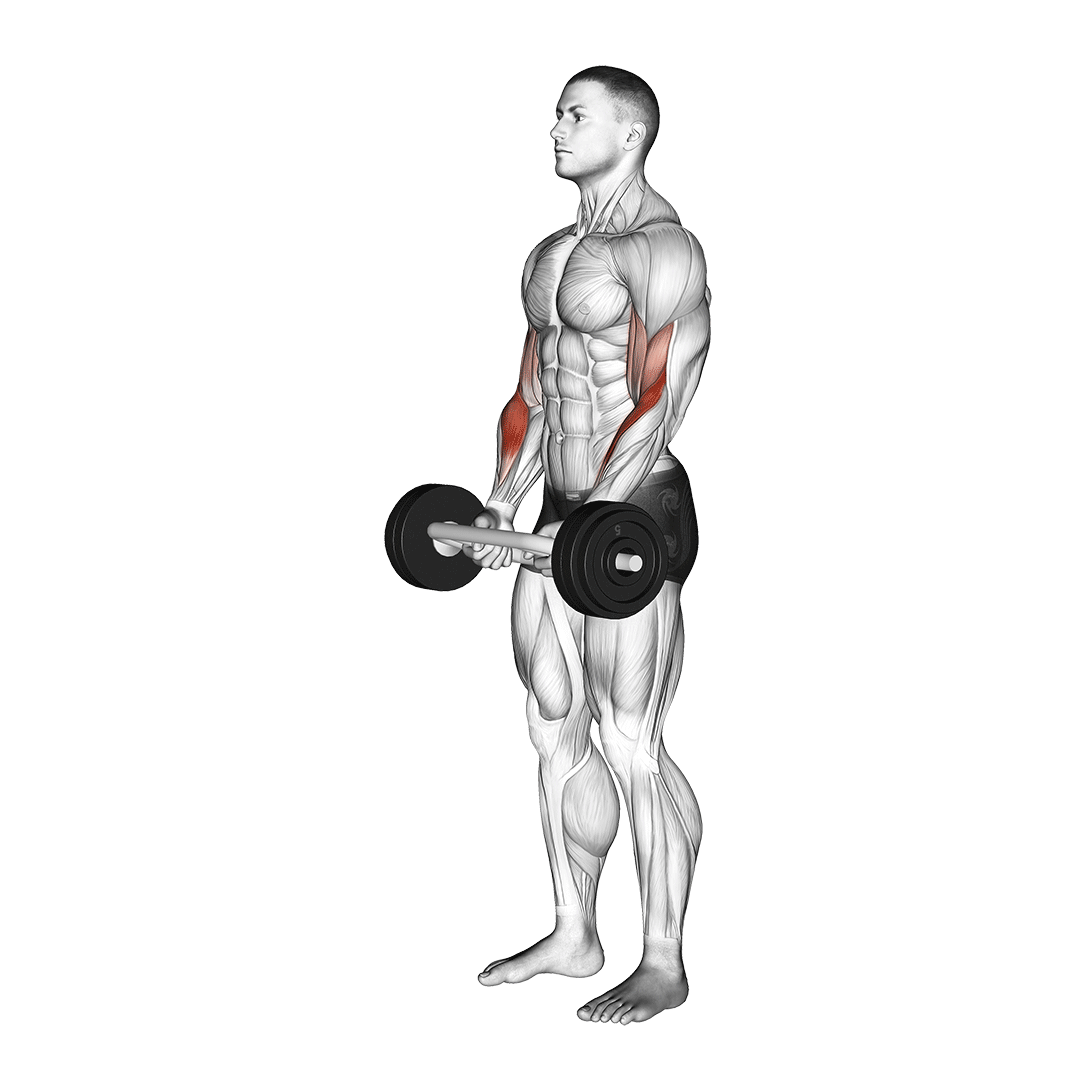
Just like the dumbbell-based hammer curl, the parallel bar hammer curl is a single-joint compound exercise that makes use of elbow flexion and a neutral grip to recruit not only the brachioradialis, but also the biceps brachii and brachialis muscles as well.
Benefits as a Brachioradialis Exercise
On account of its usage of a barbell, the parallel bar hammer curl allows for more weight to be lifted than with the dumbbell variation of the standard hammer curl - thereby better resulting in better muscular developments.
In addition, the lifter will find the movement of the parallel bar hammer curl to be more efficient than its dumbbell counterpart, allowing for less fatigue to accumulate and greater focus on form to be kept.
Equipment Needed to Parallel Bar Hammer Curl
This particular exercise will require a parallel or “tricep” barbell, as well as a set of weight plates. Ideally, a pair of barbell collars can also help in preventing accidents.
How-to:
Performing the parallel bar hammer curl is quite similar to performing any other hammer curl variation; to begin, the lifter will stand upright with the weights held around their pelvis.
Then, keeping the upper arms stationary, the lifter will bend at the elbows and draw the barbell upwards, ensuring that their grip is in a neutral form the entire time.
Once the barbell has reached shoulder elevation, they will squeeze the muscles of the arms for a moment before slowly reversing the motion, thereby completing the repetition.
4. Cable Machine Hammer Curls
For a lengthier time under tension and greater level of adjustability, some lifters may opt to switch to machine-based hammer curls instead.
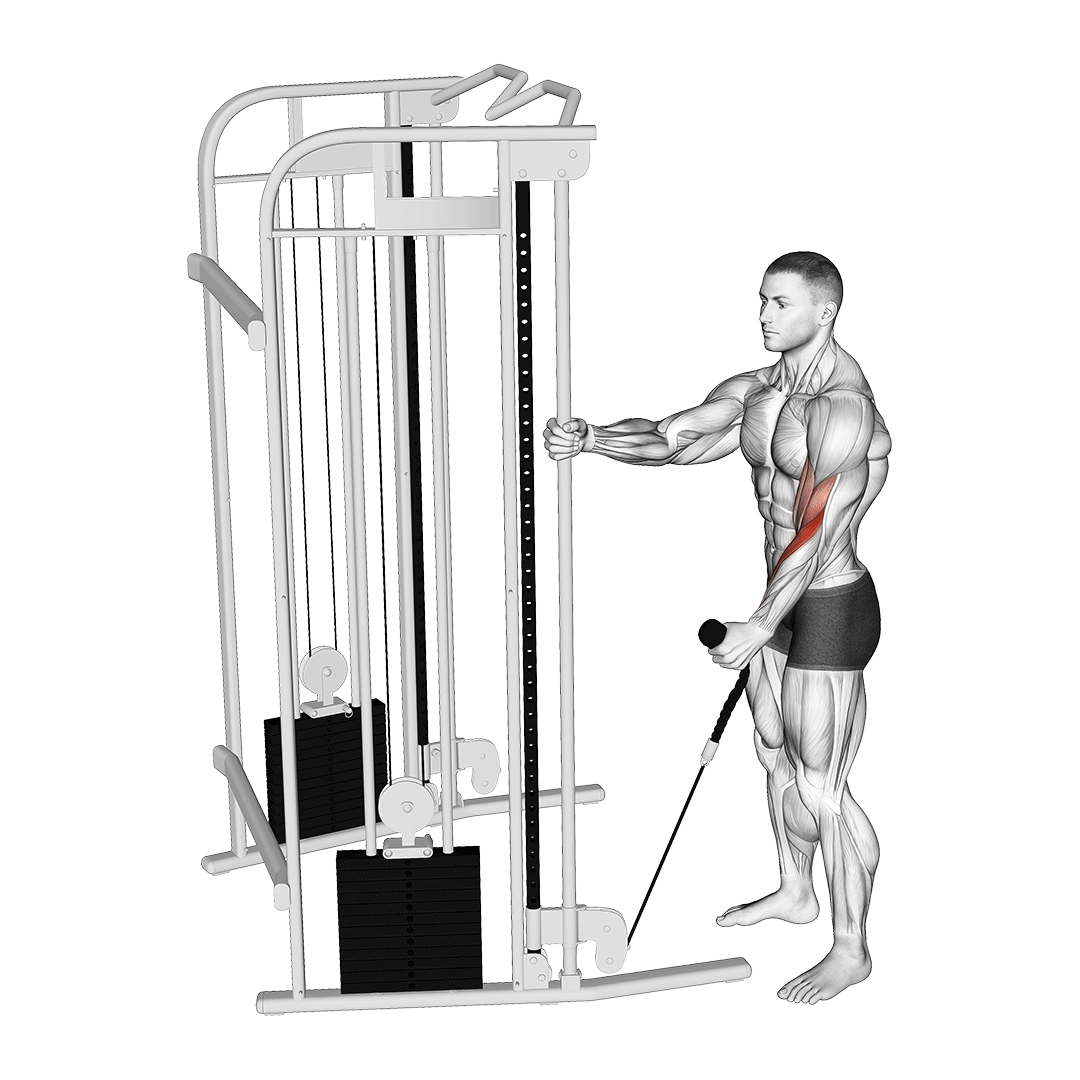
In particular, the cable machine offers the greatest versatility among the different machines that allow for hammer curls to be performed - and as such will also feature a variable number of mechanics, depending on what sort of handle and angle of resistance is used.
In general however, cable machine hammer curls will work the biceps brachii, brachialis and brachioradialis for a lengthy time under tension per repetition, occasionally also including the triceps brachii or pectoral muscles if handles other than a neutral grip bar are used.
Benefits as a Brachioradialis Exercise
Apart from the benefits of performing machine-based exercises, the cable machine hammer curl allows for a more comfortable angle of resistance to be achieved - a factor that reduces the risk of injury alongside other safety benefits associated with the usage of a cable machine.
As an addition to this adjustability, the cable machine hammer curl will also utilize stabilizer muscles to a lesser extent, meaning more energy and focus may be filtered towards the primary mover muscles.
Furthermore, the lengthy time under tension and greater capacity for volume equates to a greater potential for hypertrophy to be induced in the brachioradialis muscle.
Equipment Needed to Cable Machine Hammer Curl
This particular exercise will require a cable machine with a suitable handle attachment. Though a double-ended rope attachment may be useful, lifters may also make use of a parallel bar handle or even a pair of single-hand attachments.
How-to:
Performing the cable machine hammer curl is mechanically identical to a free weight hammer curl.
To do so, the lifter will set the cable housing to its lowest point so as to create a vertical angle of resistance.
Standing close to this point, the lifter will grip the handles with both hands and keep them around pelvis elevation. From here, the lifter will then bend at the elbows (while keeping the upper arms stationary) and pull the cable handles upwards, stopping once the hands are at approximately shoulder elevation.
To complete the repetition, the lifter will simply reverse this motion, stopping once the handles have returned to their original position around the pelvis.
5. Reverse Grip EZ Bar Curls
Though nearly all reverse grip curls will recruit the brachioradialis, the EZ bar is often preferred as its unique shape can allow for better wrist positioning and a generally more comfortable exercise.
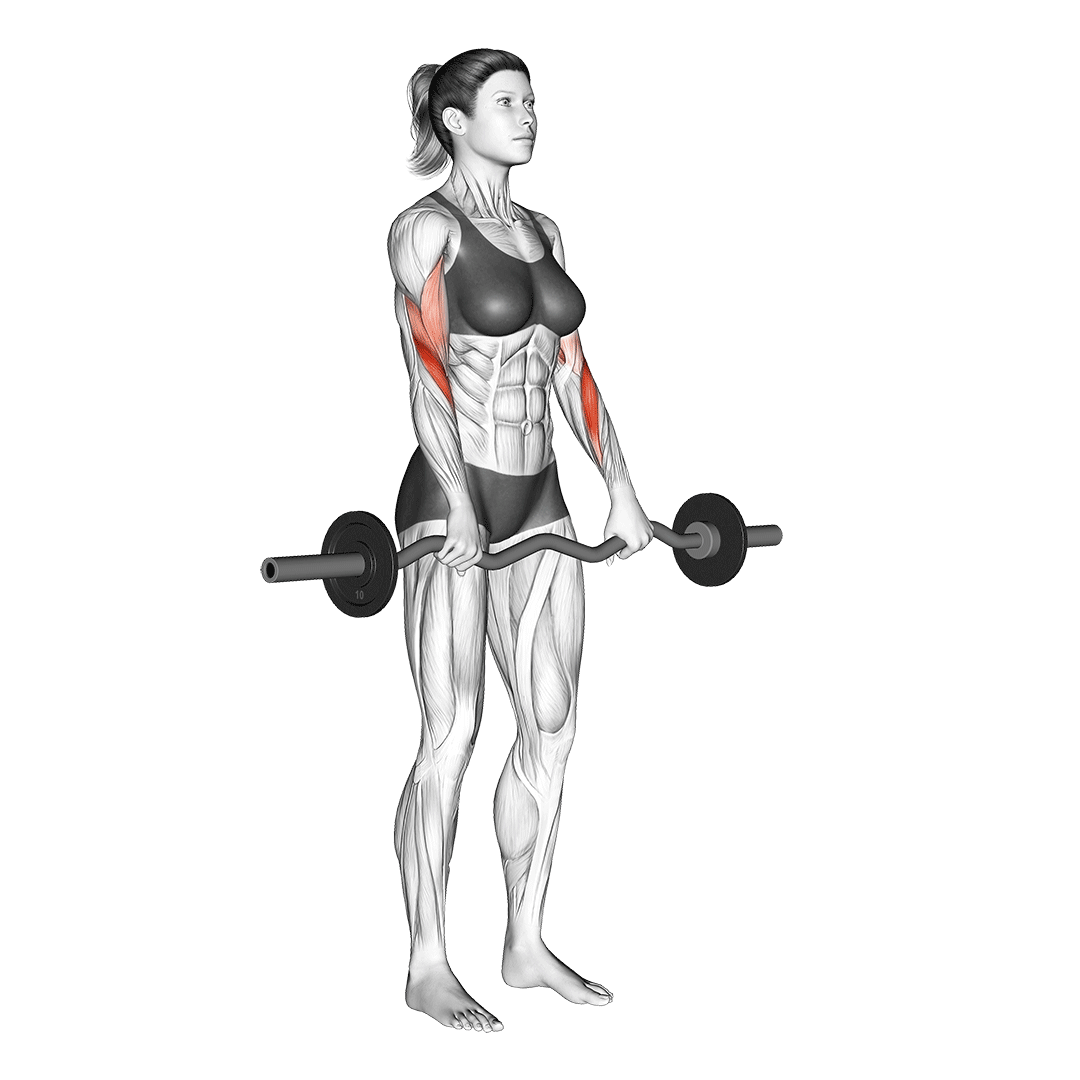
Like other brachioradialis curl exercises, the reverse grip EZ bar curl is a single-joint compound movement often utilized as an accessory movement to heavier compound exercises that work the same muscle groups - of which are the biceps brachii, brachialis, other parts of the forearms and the brachioradialis.
Benefits as a Brachioradialis Exercise
The reverse grip curl is particularly effective at building forearm mass and strength, as it will work not only the brachioradialis but also the rest of the forearm’s musculature - thereby improving grip strength and general proportionality of the arms.
In addition, the reverse grip EZ bar curl features a distinctly lower risk of injury than other barbell reverse curls due to the bends in its shape, creating more opportunity to maintain a neutral wrist position and allowing for a slightly wider range of motion.
Equipment Needed to Reverse Grip EZ Bar Curl
This particular exercise requires an EZ barbell and a pair of weight plates.
How-to:
To perform a reverse grip EZ bar curl repetition, the lifter will hold the EZ bar at their waist with both hands in a pronated grip.
Keeping the upper arms and torso stationary, they will then bend at the elbows and draw the barbell upwards - taking extra care to maintain a neutral wrist position the entire time.
Once the barbell has reached shoulder elevation, they may slowly reverse the previous movement in a slow and controlled manner, completing the repetition by returning the EZ barbell to its starting point.
How are Brachioradialis Curls Programmed?
Nearly all curls meant to target the brachioradialis are performed with high volume and a low-to-moderate amount of resistance, and will usually be performed around the end of a workout session so as to avoid prematurely fatiguing the smaller muscles of the biceps or forearms.
For lifters new to training the brachioradialis directly, 2 sets of 12 repetitions with low weight or 3 sets of 8 repetitions with moderate weight should suffice, with the lower weight sets being reserved for more intense workouts.
Final Thoughts
Remember that many brachioradialis curl exercises will also target the biceps brachii, and as such it is important to divide the training volume between your brachioradialis curl exercise and any direct biceps work that you may be performing in the same session.
References
1. Kleiber T, Kunz L, Disselhorst-Klug C. Muscular coordination of biceps brachii and brachioradialis in elbow flexion with respect to hand position. Front Physiol. 2015 Aug 6;6:215. doi: 10.3389/fphys.2015.00215. PMID: 26300781; PMCID: PMC4526813.
2. Kostek, Mark T.; Knortz, Karen. Kinesiology Corner: The Bicep Curl and the Reverse Bicep Curl. National Strength Coaches Association Journal 2(6):p 55-55, December 1980.
3. Marcolin G, Panizzolo FA, Petrone N, Moro T, Grigoletto D, Piccolo D, Paoli A. Differences in electromyographic activity of biceps brachii and brachioradialis while performing three variants of curl. PeerJ. 2018 Jul 13;6:e5165. doi: 10.7717/peerj.5165. PMID: 30013836; PMCID: PMC6047503.
